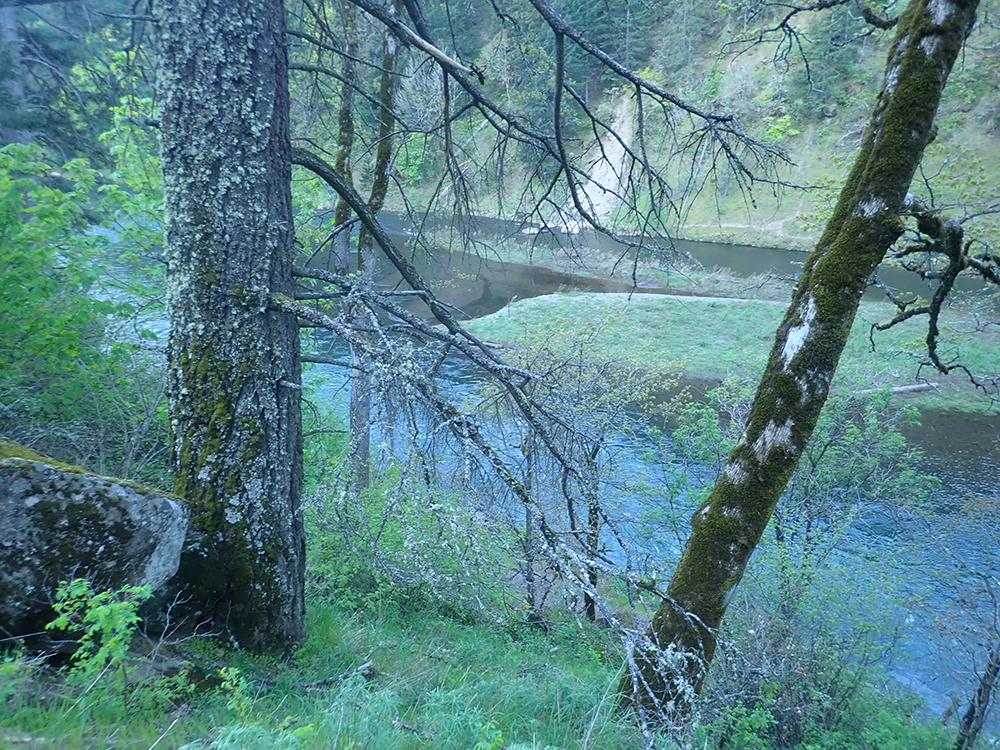
by Scott Sadil
It’s a small river. And ever since the dam came out, several miles upstream, the lower reach has spread out into two or three distinct channels, depending on flows, each one spilling through the alluvial freestone, restored by the power of rivers everywhere given the freedom to flow once more.
Small—but big enough and swift enough that paddlers in kayaks or on SUPs, ascending from the Columbia, just downstream, usually fail to make it through any of the channels. And if you climb down from the road, managing to reach the water without breaking a rod or your neck, you’d be advised to consider carefully your way across the first channel, often deeper than it looks, with nothing solid to push your boots against, just those loose round rocks tumbling merrily to the sea.
Do tighten your belt. And if you’re carrying any kind of sling or pack, you’ll want to hoist it onto your shoulders before the water climbs abruptly above your waist.

But, really, if you’ve taken Wading 101, and you’ve watched someone else cross before, you’ll do just fine.
Then again, like a lot of spring-fed rivers, this one generally runs clear, so you don’t have color to warn you if it’s up a bit.
I had a better idea as I started across the next channel, a broad flume pouring out of a tailout above, spilling into the head of the next run downstream. The trick, of course, is to start in as high as possible, where the water is shallower, the force of the current dissipated across the width of the tailout, just above the point it re-concentrates, picking up power and speed. Also, if you start in high, and yet you still feel yourself breaking loose, you can sort of hop your way across, gaining the far side even as you slip farther and farther downstream.
This time, anyway, I really should have waded upstream a bit more before starting across. Lazy? Or merely lulled by the lovely spring morning, birds chirping, the forest abloom. Hop, hop, hop hop . . . HOP! goes the angler, rolling rocks as he finally scrambles up the channel’s far bank.

Nuts, pay attention, as my departerd mother used to say.
For some reason, most of the fish we get here—rainbows mostly, a steelhead now and then come summer and fall—are found in the far channel. Not always. But that’s where you begin, following the profound notion that what worked in the past could very well work again.
Cast, swing. Cast, swing. But today nothing—until I was back where the two channels rejoin, below the chute that, not long ago, gave me a little more trouble crossing than I had anticipated. Now I was down low in the chute, where the water begins to slow, deeper here but I was pretty sure I could again hop across, a feeling I continued to have as my boot toes reached deeper and deeper for the rocks below and I felt myself sliding downstream.
Was I scared? Not in the least—which doesn’t mean I shouldn’t have been.
Then, as I began to pick up speed, and it seemed I had best begin my flutter kick as my toes were no longer finding purchase along the bottom, I felt something hit the fly. Out of the corner of my eye I caught sight of a bright handsome rainbow sparkling above the pool below.

Classic, I thought, feeling the water dribble inside the front of my waders.
I don’t really call it swimming unless I take an actual stroke or two. Rod tip high, I allowed the pull of the fish to help quarter me across the current. If you stay upright, you stay drier but, if you dip forward, water spilling down your waders, you can sink deeper, get a good toehold against the bottom, and thrust yourself up onto the bank.
The fish wasn’t big, but a good trout, nevertheless, for a river this size; I was pleased to find us still connected as I stumbled up the bank. It’s good to know they’re still with us, good to know, as well, you can go in after one without too much excitement or trouble.
But lest anyone forget: It never hurts to practice.
Gray’s angling editor Scott Sadil was happy the day he finally bought a camera he could swim with accidentally.
